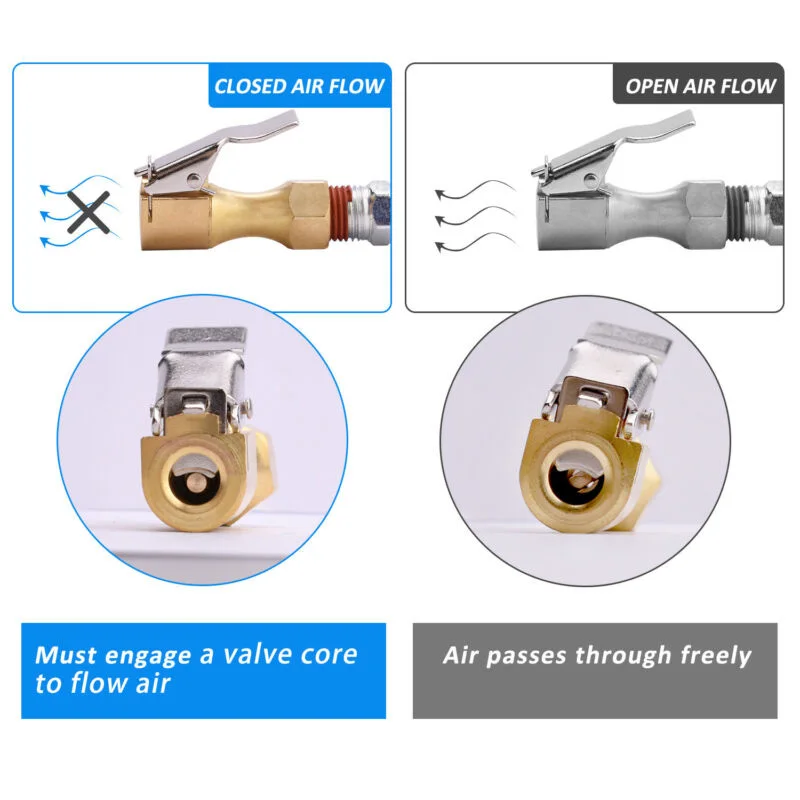We have the lock on air chuck you need to get the job done right.
Lock-On Air Chuck, Steel
View Full Product Details
Lock-On Air Chuck, Steel
View Full Product Details
Lock-On Air Chuck
View Full Product Details
Lock-On Air Chuck
View Full Product Details
Air Chuck, Range 5 to 200 psi, Size 1/4 in Female Fitting, Thread Size 1/4 In.-18 NPT, Max. Safe Storage Temp. 250 Degrees F, Color/Finish Brass, Material Brass, Dimension 1-3/4 in x 3/4 in, Features European Style Clip-On Air Chuck, Used For Inflating Tires
View Full Product Details
$11. 31
Air Chuck, Range 5 to 200 psi, Size 1/4 in Female Fitting, Thread Size 1/4 In.-18 NPT, Max. Safe Storage Temp. 250 Degrees F, Color/Finish Brass, Material Brass, Dimension 1-3/4 in x 3/4 in, Features European Style Clip-On Air Chuck, Used For Inflating Tires
View Full Product Details
Lock-On Chuck 1/4" FPT
View Full Product Details
$11.29
Lock-On Chuck 1/4" FPT
View Full Product Details
Dual Foot Lock-On Air Chuck, Open
View Full Product Details
Dual Foot Lock-On Air Chuck, Open
View Full Product Details
Grip-Tite Chuck, Range 300 psi, Size 1/4 in, Thread Size 1/4 in FNPT, Color/Finish Steel, Material Steel, Features Straight-On Air Line Chuck, Snaps on to Standard Tire Valve and Trays Put Until Disconnected, Used For Filling Tires
View Full Product Details
$16. 09
09
Grip-Tite Chuck, Range 300 psi, Size 1/4 in, Thread Size 1/4 in FNPT, Color/Finish Steel, Material Steel, Features Straight-On Air Line Chuck, Snaps on to Standard Tire Valve and Trays Put Until Disconnected, Used For Filling Tires
View Full Product Details
Air Chuck, Range 0 to 300 psi, Size 1-1/2 in, Thread Size 1/4 In. NPT, Max. Safe Storage Temp. 250 Degrees F, Color/Finish Zinc Plated, Material Brass/Steel, Dimension 1 1/2 in, Features Easy Lock, Used For Inflating and Checking Pressure, Includes Lock On Head
View Full Product Details
$10.93
Air Chuck, Range 0 to 300 psi, Size 1-1/2 in, Thread Size 1/4 In. NPT, Max. Safe Storage Temp. 250 Degrees F, Color/Finish Zinc Plated, Material Brass/Steel, Dimension 1 1/2 in, Features Easy Lock, Used For Inflating and Checking Pressure, Includes Lock On Head
View Full Product Details
Tire Chuck, Size 1/4 in NPT Female, Color/Finish Black, Material Metal, Features Reverse Angle, Used For Tires, wheels
View Full Product Details
$11.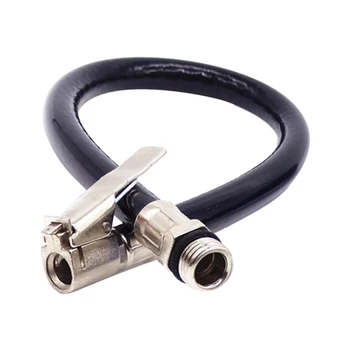 68
68
Tire Chuck, Size 1/4 in NPT Female, Color/Finish Black, Material Metal, Features Reverse Angle, Used For Tires, wheels
View Full Product Details
Air Chuck, Dual Head 1/4"FNPT
View Full Product Details
Air Chuck, Dual Head 1/4"FNPT
View Full Product Details
Air Chuck, Range 200 psi, Thread Size 1/4 In.-18 NPT, Color/Finish Brass, Material Brass, Features Clip-On European Style
View Full Product Details
$12.33
Air Chuck, Range 200 psi, Thread Size 1/4 In.-18 NPT, Color/Finish Brass, Material Brass, Features Clip-On European Style
View Full Product Details
Dual Foot Air Chuck, 14 In.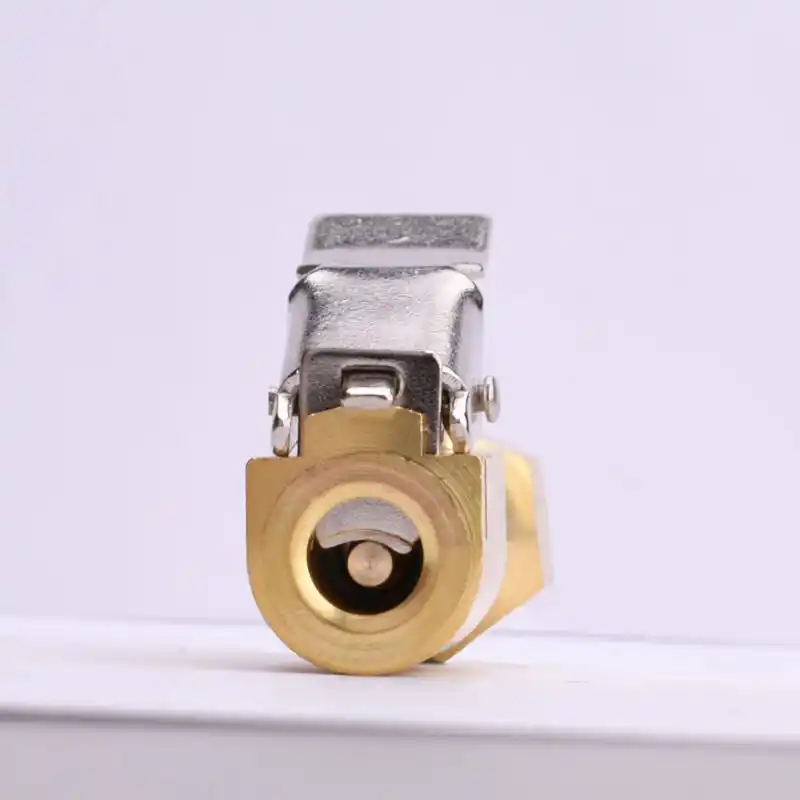 Long
Long
View Full Product Details
Dual Foot Air Chuck, 14 In. Long
View Full Product Details
Inflator, w/Dual Foot Air Chuck
View Full Product Details
$10.11
Inflator, w/Dual Foot Air Chuck
View Full Product Details
See Product Video
Quantity 12345678910
In Stock & Ready To Ship
Description Shipping & Returns Why Buy From Us Frequently Asked Questions
Click or tap on the air chuck and move around to see 360 degree view.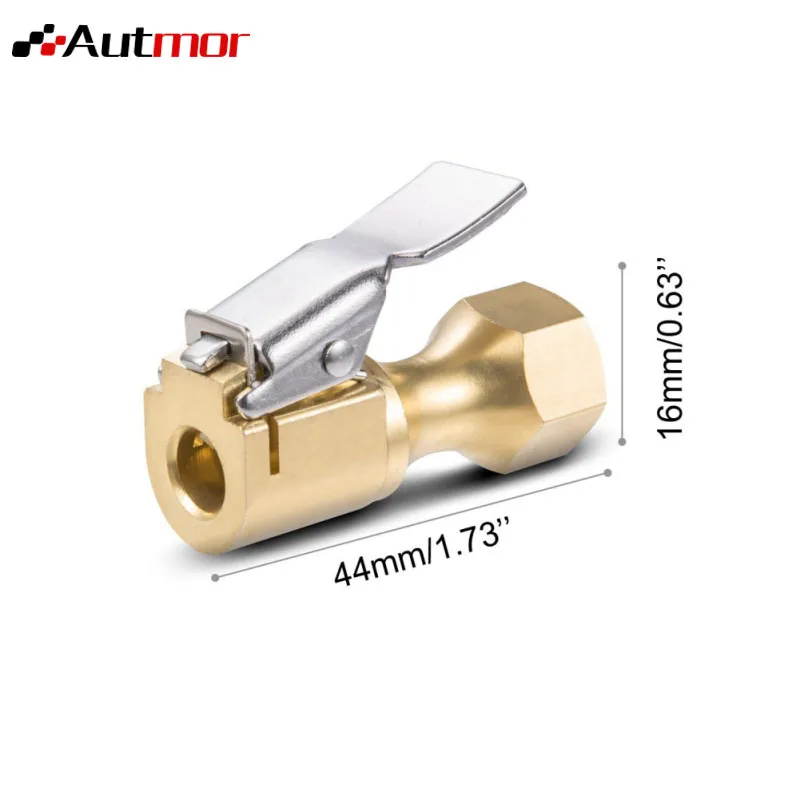
IMPORTANT: this is an OPEN FLOW style air chuck. This means that air will flow freely through the chuck as soon as an air source is connected and turned on. There is no check valve inside this air chuck - air will flow through the chuck whether or not it is engaged with the tire valve stem.
Open flow style air chucks are designed to be used with:
Open flow style air chucks should not be directly connected to the airline of an air compressor with air tank (such as a pancake compressor) since they will deplete the air from the tank. If using with an air compressor with tank, you must also use an inline, hand-operated tire inflation tool.
With time, comes evolution - and with evolution comes the all-new Lightning™ Series air chuck collection by JACO.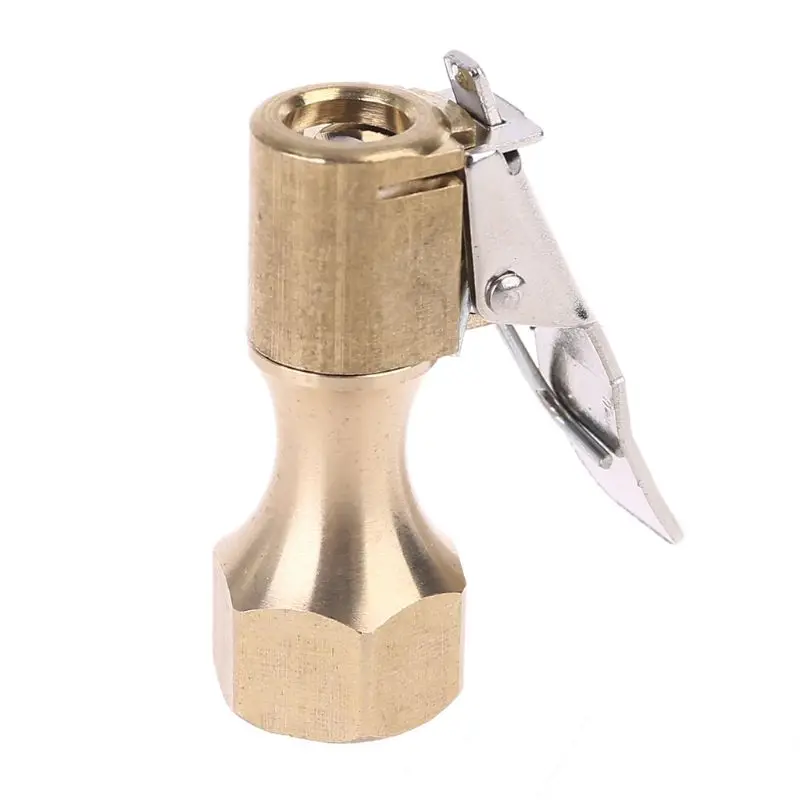 This progress is driven by those who demand high-performance air tools built to last for all-day performance in the garage or shop.
This progress is driven by those who demand high-performance air tools built to last for all-day performance in the garage or shop.
We have completely revolutionized the air chuck from the inside-out with many industry-first features - utilizing patented technology & high-density alloy making our Lightning™ Series the most rugged, reliable, and easy to use collection of air chucks ever.
The S-Series is the first-ever air chuck we have developed with Lightning™ Technology. Our original model is the foundation for the entire product line - built on the core principles of consistency, simplicity, and durability. Equipped with our exclusive AirLock™ Technology and Quick-Release.
* Also compatible with portable 12v tire pumps using our special Lightning Adapter.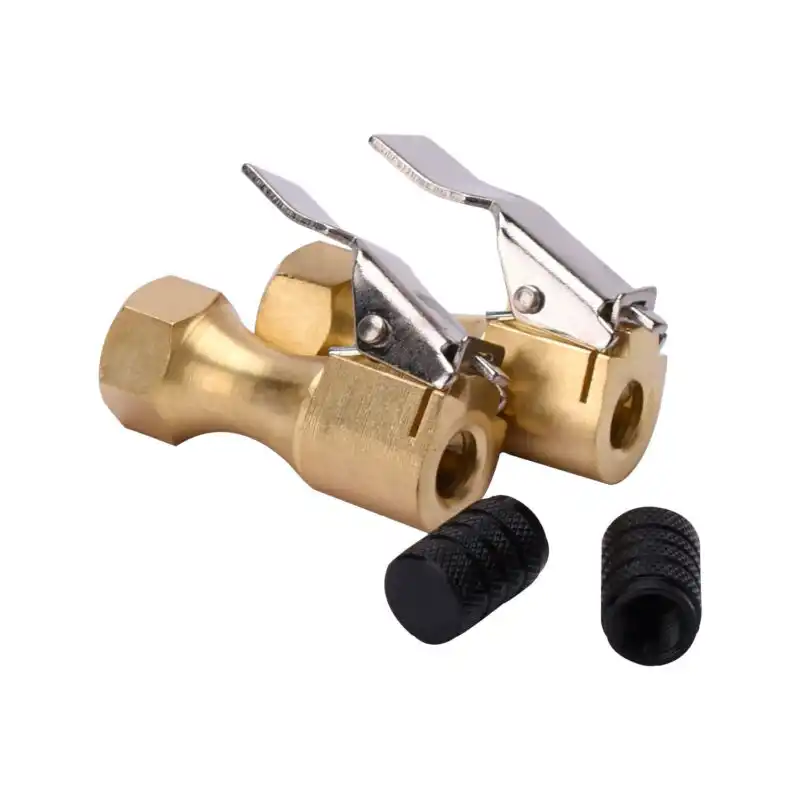

Our Lightning S-Series is backed by our industry-best 100% Lifetime Warranty by the most trusted name in precision air tools. All of our top-rated products are designed, engineered, and performance tested at our NIST certified industrial facilities in Illinois and Colorado.
Built for enthusiasts, by enthusiasts. Experience first hand the greatest advancements in air chucks ever made.
Order today while supplies last. Limited stock.
100% FAST & FREE Standard Shipping On All Orders in the USA!
Lightning® is a registered trademark of JACO Superior Products
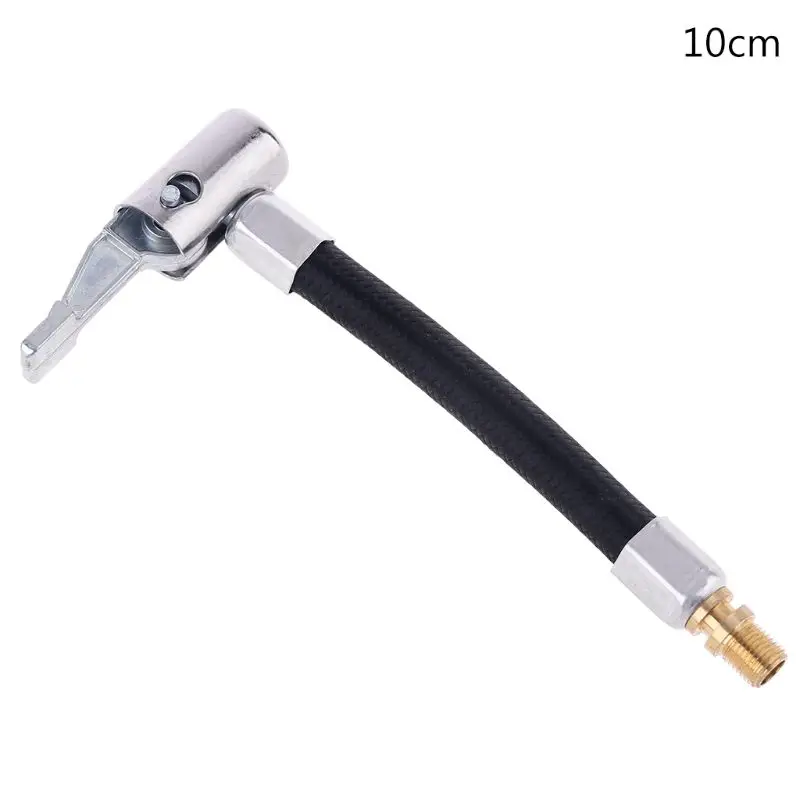
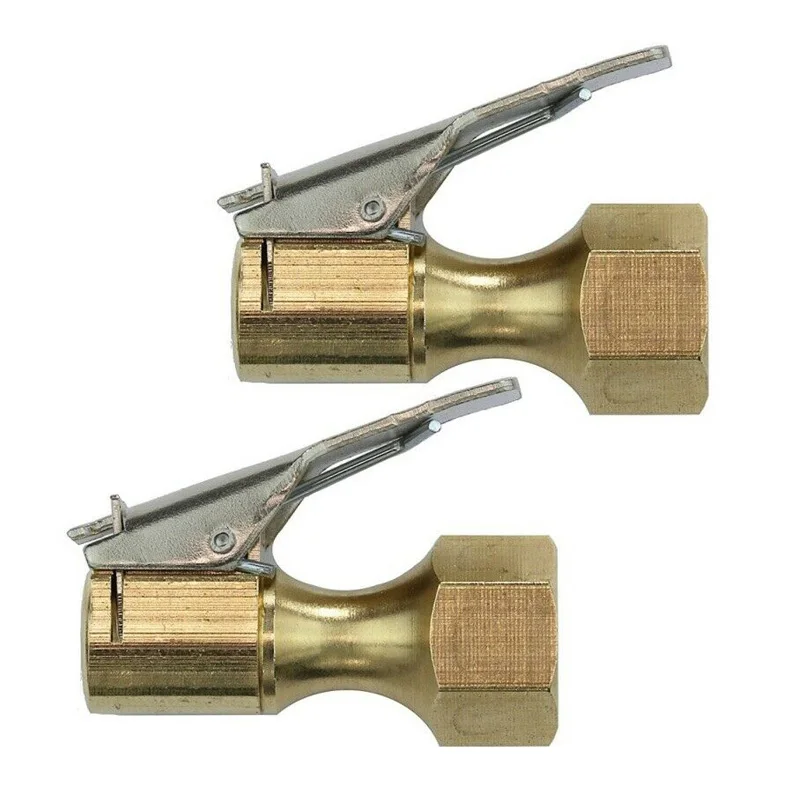 We must be doing something right!
We must be doing something right!An air chuck, by definition, is simply a device that is used to hold an object in place while it is being worked on by a pneumatic machine, such as an air compressor.
One of the most common types of air chuck is a tire chuck. Tire air chucks connect to the stem or hose of a tire gauge, inflator, or air compressor. The tire chuck holds the air line onto the tire valve stem, so that air can flow freely between the tire and tool being used to check, inflate, or deflate tire pressure.
Open flow air chucks allow the air to pass freely through the chuck, even if the chuck is not engaged with the tire valve stem. Open flow air chucks do not have an internal check valve. This style is ideal for use with 12-volt tire inflators, onboard air compressor systems, hand-operated tire inflator tools, and tire gauges.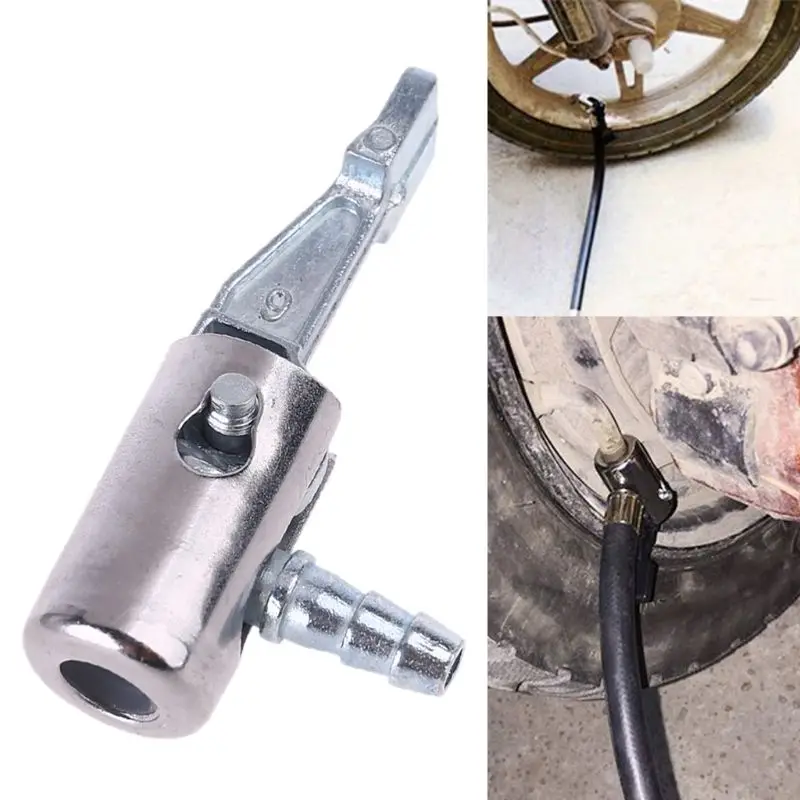
Closed flow air chucks feature internal check valve that block air from flowing through unless the chuck is engaged with the tire valve stem, which makes them more efficient for using directly on the air line of an air compressor with tank such as a pancake-style compressor.
Our Lightning™ Series air chucks utilize industry-first features that make them the strongest, most reliable, and easy to use air chucks ever made. Before we get into how our Lightning™ Chucks work, let's first cover the other common types of air chucks that you will find.
These are the most common air chucks you will see. They have been around for a long time without much innovation or change and are usually made from steel or brass. However, they have quite a few drawbacks.
If you've ever used these, you probably have experienced how inconsistent they can be. Often times, you will need to "fight the valve stem" to get a proper seal.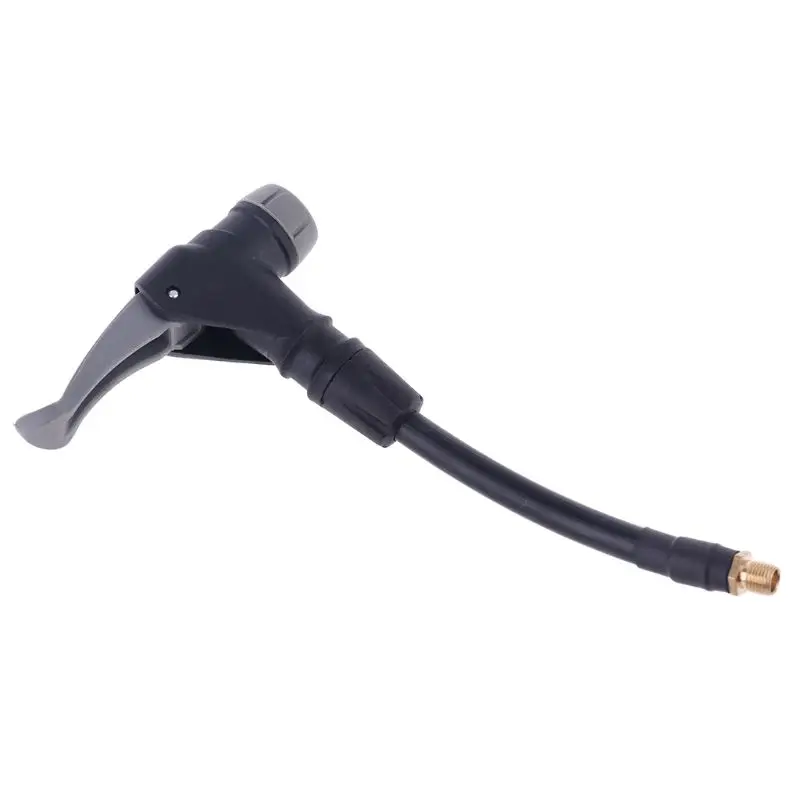 The clip-on mechanism is usually pretty stiff, and when you do get a decent seal it's hard to maintain that seal without some minor (or even major) air leakage, especially when using with an air compressor or when you move the hose around. These chucks are usually very sensitive to movement, and a slight tug of your air hose can completely compromise your seal.
The clip-on mechanism is usually pretty stiff, and when you do get a decent seal it's hard to maintain that seal without some minor (or even major) air leakage, especially when using with an air compressor or when you move the hose around. These chucks are usually very sensitive to movement, and a slight tug of your air hose can completely compromise your seal.
What's worse, the clip-on mechanism is not very smooth and often requires multiple attempts to get a proper seal. Also, the body of these chucks are often made up of a few different components that are held together by threading, making them very easy to fall apart on you.
Next, is the "classic" or "manual" air chuck models. These types of air chuck require you to hold them onto the valve stem for as long as you're working on your tires - they do not clip-on or hold the seal on their own. Although these usually have less problems than the above clip-on style chucks in terms of falling apart, they are still a pain because you are required to constantly force the chuck onto your valve stem to maintain the connection. This can become tiresome very quickly, and is our least preferred option due to the difficulty of use and manual labor.
This can become tiresome very quickly, and is our least preferred option due to the difficulty of use and manual labor.
If you have ever shopped for a portable 12V tire inflator - you have probably seen twist-on air chucks. These types of air chucks are usually made of plastic, steel, or brass and require you to fully twist the chuck on and off the valve stem. These actually provide a decent seal when fully twisted on, but the process of twisting them on and off the valve stem takes a lot of time. What's worse, you are almost guaranteed to lose a decent amount of air from your tire during the disconnection process.
Although these are okay for casual use (i.e. emergency tire inflators in your trunk) we do not recommend these for anything more than that.
We have solved all of the problems of the previous three air chuck options, resulting in the strongest, most reliable, and easy to use air chucks ever.
100% airtight seal every timeOur patented AirLock™ Internal Locking System utilizes internal locking clamps with superior hold strength that lock onto the tire valve with a simple push, providing a 100% air tight seal that will never leak or fail you, even under high pressure or movement.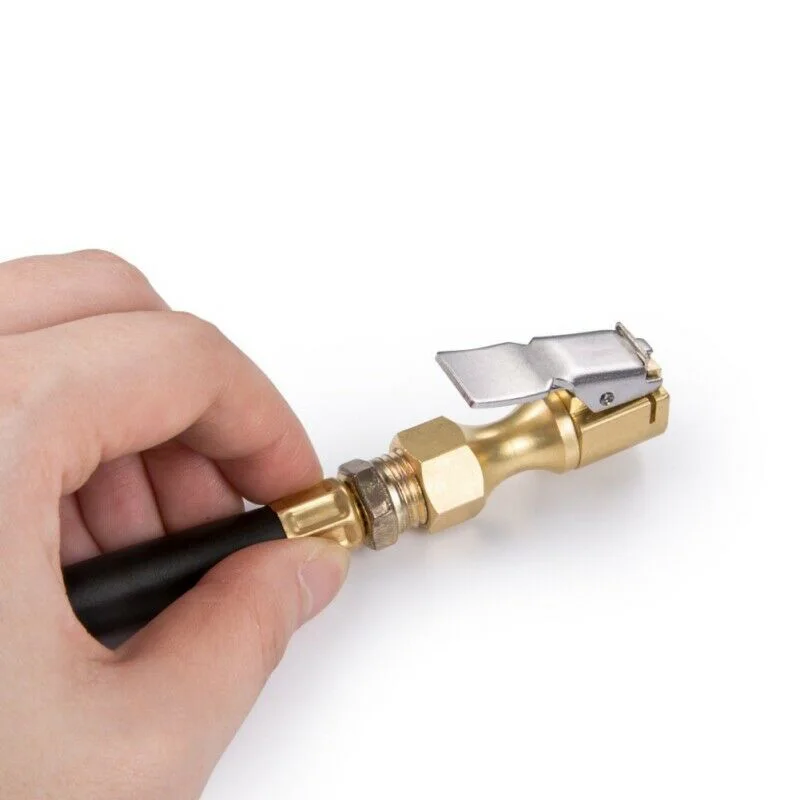 Most of our Lightning™ Series air chucks offer one of more integrated 360-degree swivel points that allow you to completely rotate the chuck from various points, allowing easy access to the tire valve stem from any angle, while eliminating any tension that will cause other air chucks to "pop off" or leak air.
Most of our Lightning™ Series air chucks offer one of more integrated 360-degree swivel points that allow you to completely rotate the chuck from various points, allowing easy access to the tire valve stem from any angle, while eliminating any tension that will cause other air chucks to "pop off" or leak air.
No more fighting the valve stem for a proper seal. No more air loss.
Lightning Fast Removal, Zero Air Loss.Next, we have integrated Quick-Release Technology into all of our Lightning™ Series air chucks. Our quick-release valves are easily accessible on every model air chuck we offer, allowing you to rapidly disconnect from the tire valve stem with absolutely zero air loss - completely eliminating any margin for error when precision matters most.
Easy to Use, Built to Last.Finally, we have engineered all of our Lightning™ Series air chucks with durable, lightweight, and high performance metal alloys - ensuring they will never rust, wear, or fall apart on you.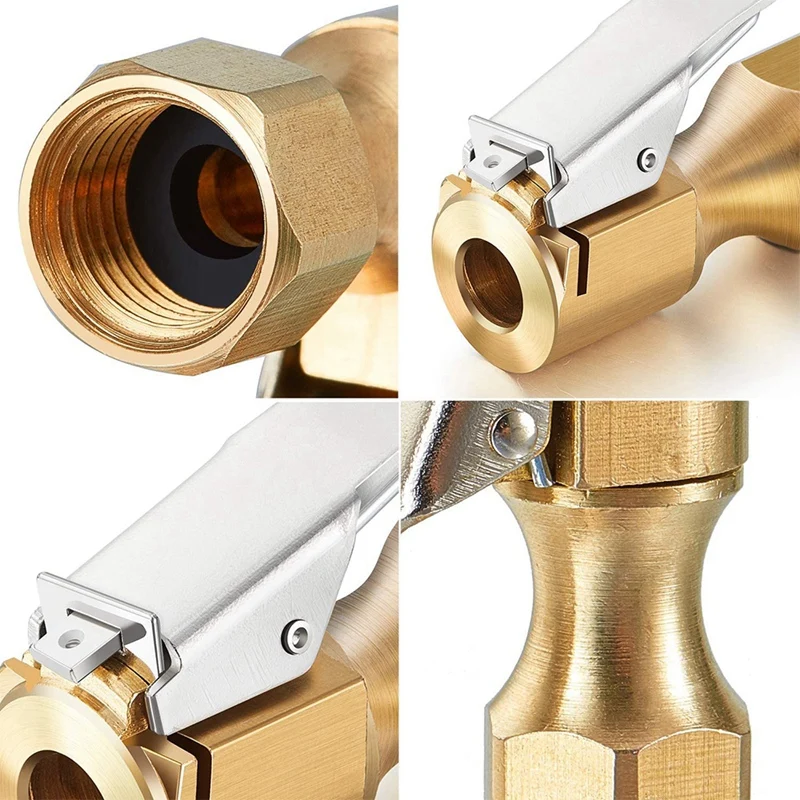
All of our tire gauges and inflator tools that accept 1/4 inch NPT attachments will work with our Lightning Air Chucks.
Yes, they are compatible with any air hose or tool that features 1/4" NPT threading. Our Lightning™ Series air chucks are laser-cut to precision with universal 1/4" F-NPT threads for maximum compatibility with any air gauge, inflator, compressor, fitting, or air hose that uses this standard.
Most 12-volt tire inflators have twist-on or latch-on valve stem nozzles. You can make it work with this special adapter.
However, we also have a lineup of Lightning extension nozzles that are specially designed for 12-volt tire inflators.
Lightning™ Chucks are unlike any air chuck you've ever used.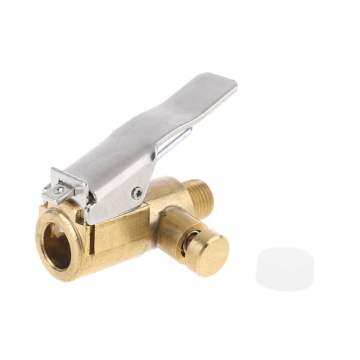 We integrate industry-first patented technology that offers far superior performance in every aspect compared to other air chucks available.
We integrate industry-first patented technology that offers far superior performance in every aspect compared to other air chucks available.
Lightning™ Series air chucks are available exclusively by JACO. We offer 100% Free Standard Shipping (3-5 days) for all orders in the USA when you place an order here on our official online shop. They are also available on our official Amazon storefront.
Since these air chucks feature technology, it is inevitable that counterfeit (and potentially dangerous) knock-offs will be produced by companies that are not authorized to sell our air chucks. Always make sure you are purchasing Lightning™ Air Chucks from here on our online store or official Amazon store. Most customers will buy from us either here on our online store or Amazon.com.
Our technology and branding is protected by US Patent & Trademark Law. JACO is the owner of the Lightning™ trademark will take action against any company or seller that infringes upon these intellectual properties.
JACO is the owner of the Lightning™ trademark will take action against any company or seller that infringes upon these intellectual properties.
Lightning™ S-Series Tire Air Chuck | Open Flow, 1/4" F-NPT (2 Pack) has a rating of 5.0 stars based on 43 reviews.
Author: Evgeny Balabas
You went down to your car in the morning to go to work or on business, and the usual padlock and a note with a phone were attached to the wheel, to which extortionists offer to transfer money in order to find out the place where the key is hidden, or a digital code . How to act in such a situation? Can I drive with a lock and how can I safely remove it later?
A lock on a wheel or a doorknob is a relatively common (although, fortunately, not too common) scheme of fraudsters, which has supplanted the recently popular theft of license plates.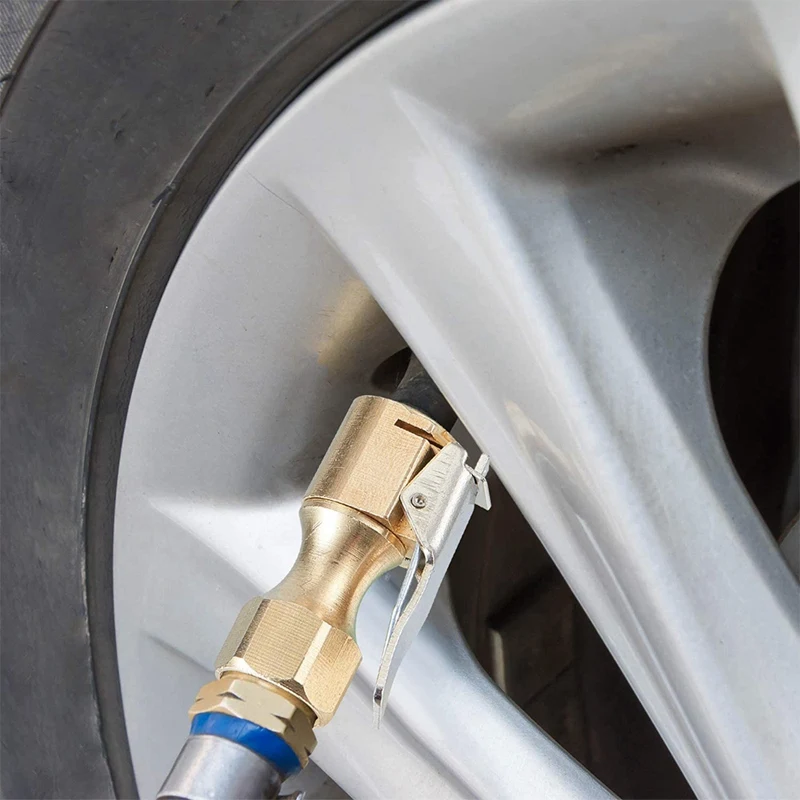 To be honest, the topic is not new - I remember at least a couple of "parishes" of this fad in previous years. However, having found several articles in automotive online publications and a couple of recommendations from crooked bloggers on YouTube and Yandex.Zen, we were horrified by the illiterate nonsense offered there, such as the idea of sawing the lock shackle with a manual hacksaw or breaking it with leverage, such as wedging two open end wrenches. All this usually leads to scratches and dents on the body and disc. There is only one competent option - to cut off the lock with a cutting abrasive disc. This can be done on your own, in any car repair shop or garage cooperative for a symbolic amount. The main thing is to decide: Is it possible to drive with a lock on the wheel or will the problem have to be solved on the spot?
To be honest, the topic is not new - I remember at least a couple of "parishes" of this fad in previous years. However, having found several articles in automotive online publications and a couple of recommendations from crooked bloggers on YouTube and Yandex.Zen, we were horrified by the illiterate nonsense offered there, such as the idea of sawing the lock shackle with a manual hacksaw or breaking it with leverage, such as wedging two open end wrenches. All this usually leads to scratches and dents on the body and disc. There is only one competent option - to cut off the lock with a cutting abrasive disc. This can be done on your own, in any car repair shop or garage cooperative for a symbolic amount. The main thing is to decide: Is it possible to drive with a lock on the wheel or will the problem have to be solved on the spot?
The first and most important thing is to find out whether the free rotation of the wheel is possible in principle, or is the wheel blocked from engaging the disc with the lock on the fixed brake caliper? Both options are real - it all depends on the type of lock and the shape of the rim and its spokes.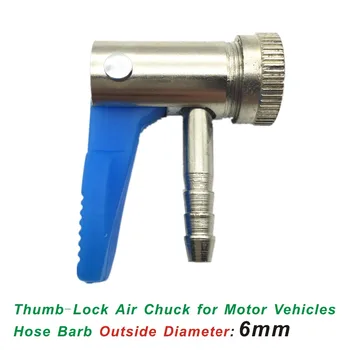 You can be absolutely sure only by jacking up the car and turning the wheel with the lock manually in order to understand whether it is able to make a full turn without touching the brake caliper lock with the shackle. At the time of checking, the lock should be slightly pulled towards you - that is, choose a slack in the shackle covering the spoke of the disk:
You can be absolutely sure only by jacking up the car and turning the wheel with the lock manually in order to understand whether it is able to make a full turn without touching the brake caliper lock with the shackle. At the time of checking, the lock should be slightly pulled towards you - that is, choose a slack in the shackle covering the spoke of the disk:
If the wheel catches, then, of course, it is absolutely impossible to drive! Both the caliper and the disc will be damaged. If it does not cling, then movement on its own is not forbidden. The fact is that by itself, driving with an imbalance caused by a heavy lock is not dangerous at low speeds (up to about 30 km / h) and at a distance of several kilometers to the nearest car service or garage. At this speed, 200-250 grams of imbalance is completely invisible and does not cause beats in the wheels and steering wheel. And they do not cause any damage to either the wheel bearing or other components of the car.
If you do not have a tool to cut off the "enemy" from the wheel directly on the spot, and decide to go to a car service or garage, then the lock dangling and jumping on the wheel can reach the caliper with its shackle, damaging it, or at least quickly cover it with scratches and dents in the spoke of the disk - probably beautiful and expensive. But this can be avoided - you just need to lay protective pads under the lock and pull it tightly to the wheel. For this, an ordinary PET water bottle, cut with a knife or scissors, and plastic tie-ties or a simple rope are perfect.
But this can be avoided - you just need to lay protective pads under the lock and pull it tightly to the wheel. For this, an ordinary PET water bottle, cut with a knife or scissors, and plastic tie-ties or a simple rope are perfect.
We slip a rectangle of plastic under the shackle of the lock, covering the wheel spoke with it, wrap the lock itself with another piece and pull it tightly to the disk with zip ties or a rope.
If a trick from intruders caught you on a business trip or at work, then it may turn out that the only solution to the problem is a trip to a car service or garage. But if the trouble caught near the house, and in your tool arsenal there is a wireless rechargeable angle grinder (angle grinder), then the problem is solved in just a couple of minutes on the spot: the shackle is easily cut off. This option is definitely the best, fastest and easiest!
We just have to admit that a wireless cordless angle grinder is not yet the most common tool in the household of home craftsmen . .. In its absence, you will have to look for a much more common wire grinder, collect extension cords around the entrance, from which you will have to build a long electric tail, and knock on your neighbors on the lower floors to throw the wire out the window.
.. In its absence, you will have to look for a much more common wire grinder, collect extension cords around the entrance, from which you will have to build a long electric tail, and knock on your neighbors on the lower floors to throw the wire out the window.
Unlike a cordless grinder, today almost every home already has a cordless screwdriver. Some also have an adapter for grinder discs to it, and those who don’t have it can be made from a regular M8 bolt, nut and a pair of washers. At first glance, everything seems simple and self-explanatory - I clamped the attachment for fixing the grinder disk (from Aliexpress or home-made) into the Shurik cartridge and drank! But there are some nuances that are important to know.
The grip of a screwdriver in grinder mode and a normal full-fledged grinder is completely different. The latter has it correct, the “Shurik” has no. Sawing with the help of a "shurik" held with one hand constantly tends to warp the disc, which, coupled with the low speed of the disc, creates a constant risk of breaking it.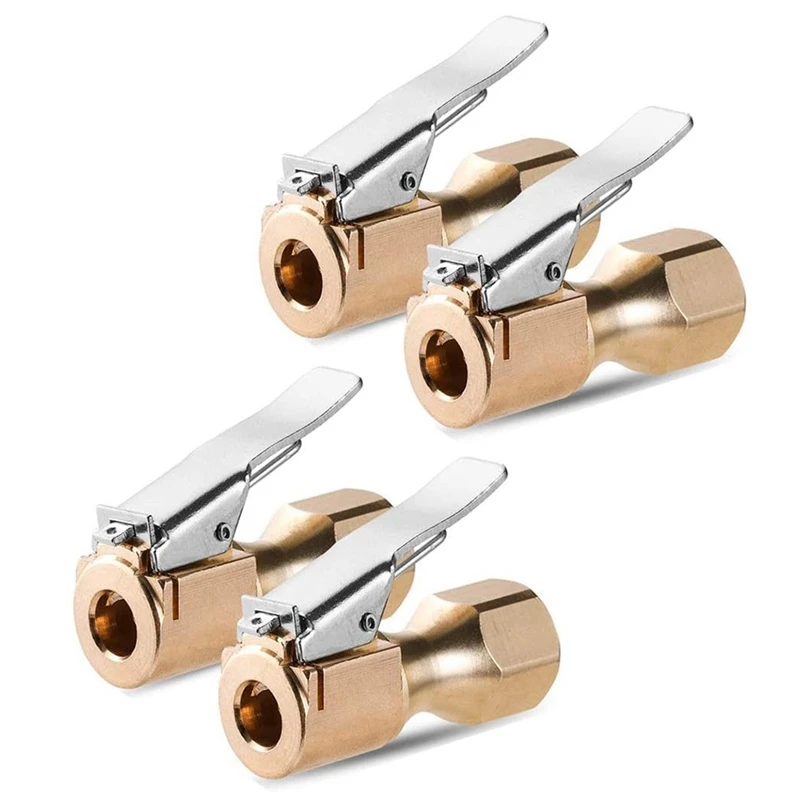 The skew is obtained from an incorrect (for the cutting mode) load on the hand from the L-shaped screwdriver and from the need to strain the brush to hold a sufficiently tight key.
The skew is obtained from an incorrect (for the cutting mode) load on the hand from the L-shaped screwdriver and from the need to strain the brush to hold a sufficiently tight key.
You can compensate for this with a two-handed grip - not by the handle, as usual in drilling mode, but by the body and battery, while (important!) fixing the start key! In no case should the key be held with a finger - it must be fixed in the pressed state with a plastic clamp, adhesive tape, electrical tape, rope. You will have to turn on the screwdriver by installing the battery in the handle slot, and turn it off by removing it.
Only cut a well-locked lock, not a loose lock. Otherwise, the cutting disc is at risk of breaking - much more than in the case of a much higher-speed grinder. Do not use the cores of old discs - only new ones: the smaller the diameter, the lower the angular speed of the cutting surface at the same speed. And don't forget eye protection!
P.S.: We sawed the shackle with a diameter of 10 mm with a screwdriver in about 3 minutes.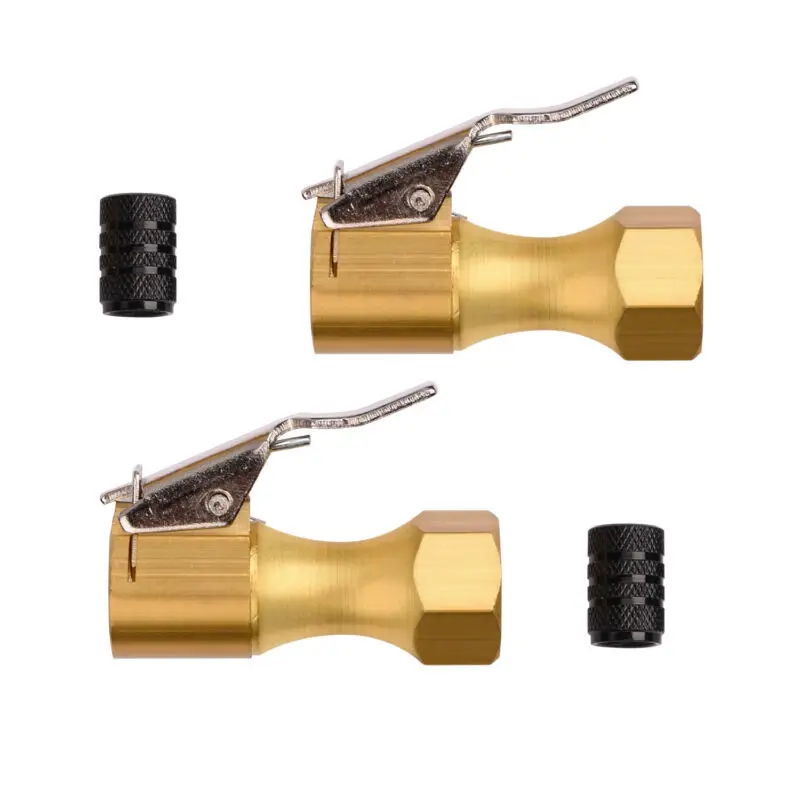
Poll
Have you ever had a wheel blocked?
Your vote
Total votes:
practice
Test drives / Test drive Haval Dargo vs Mitsubishi Outlander: the dog is barking, the stranger is coming In the Haval dealership in the south of Moscow, life is in full swing: buyers look at cars, communicate with managers and sign some papers. While I was waiting for the test Dargo, the same cross... 17821 7 205 13.09.2022
Test drives / Test drive Motor from Mercedes, emblem from Renault, assembly from Dacia: test drive of the European Logan 1.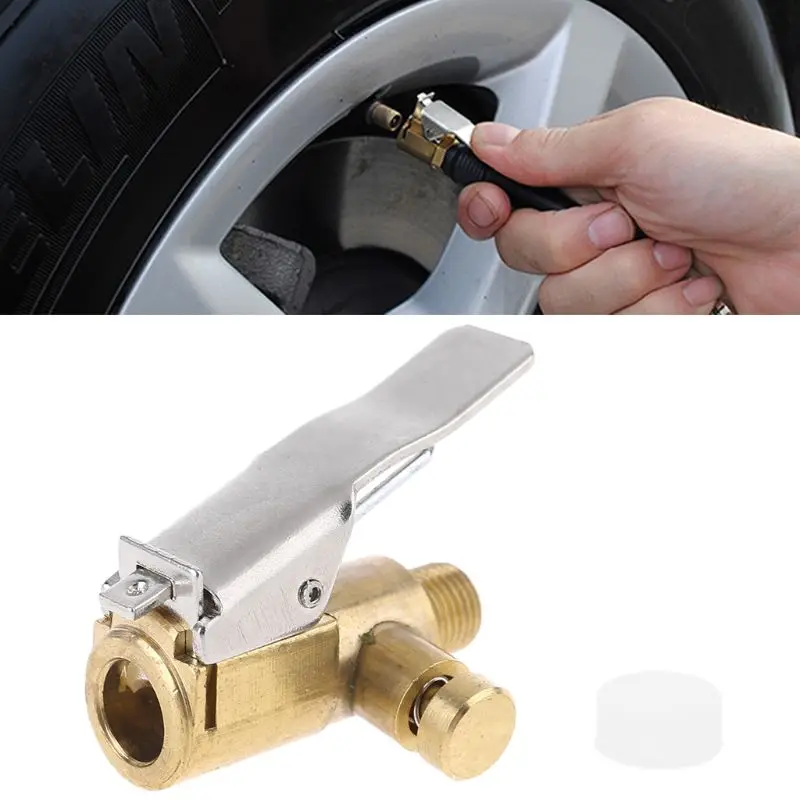 0 It would seem that what's new can be told about the second generation Renault Logan, known to every Russian taxi driver, as they say, up and down? However, this car has... 14326 ten 41 08/13/2022
0 It would seem that what's new can be told about the second generation Renault Logan, known to every Russian taxi driver, as they say, up and down? However, this car has... 14326 ten 41 08/13/2022
Test drives / Test drive Geely Coolray vs Haval Jolion: Free Cheese? If! Do you want to buy a car today with a full warranty, on credit at an adequate rate, without wild dealer markups? Now this is still a task, because a full-fledged chain of "representation - s... 11515 26 thirty 08/10/2022
Close
Moscow and region
Select city
Moscow and region
The shops Delivery to regions
Contacts
+7 495 988-83-88around the clock
8 800 333-83-88(toll-free)
Tires are one of the most important inventions of all mankind. It is worth noting that a modern car would not have become such a successful and efficient vehicle without pneumatic tires. Outwardly, the tires are little different from each other, with the exception of the tread pattern and their radius. All of them consist of various rubber compounds and fillers. Some sizzle - others don't. The round shape of the tires is maintained by the carcass. The carcass directly affects many tire characteristics.
It is worth noting that a modern car would not have become such a successful and efficient vehicle without pneumatic tires. Outwardly, the tires are little different from each other, with the exception of the tread pattern and their radius. All of them consist of various rubber compounds and fillers. Some sizzle - others don't. The round shape of the tires is maintained by the carcass. The carcass directly affects many tire characteristics.
Diagonal frame
Radial frame
Let's consider two types: tires with a diagonal and a radial carcass. Despite the external similarity, they are structurally very different.
Frame
The bias tire has a carcass made of
multi-ply cord. As a rule, the number of layers
is a multiple of two. Textile cords of different layers
are located at an angle of 35° to 40° to each other
and intersect exactly in the middle of the tire
protector.
Frame
Breaker belt
Frame
In radial tires, the cords are located at a
angle of 90° and are located along the entire tire
tread. And those sections of the tire that
And those sections of the tire that
are located in the contact patch with the
road surface are reinforced with a steel cord (it is also called a belt belt
).
In addition to the difference in the arrangement of cords, there are many other differences
- Cord threads for diagonal tires are made of nylon or kapron, for radial tires they are made of steel.
- Bias tires can have several layers of cord - from two or more, radial tires have only 1.
- Most of the diagonal tires are chambered, radial tubeless.
Functional differences of radial tires
— Better contact with the road. Radial tires have a larger contact patch compared to
bias tyres.
- The weight of a radial tire and a bias tire with the same radius will be different. Lighter tire with radial carcass
ply.
— A radial tire can carry more loads (15 to 20%) than a bias tire.